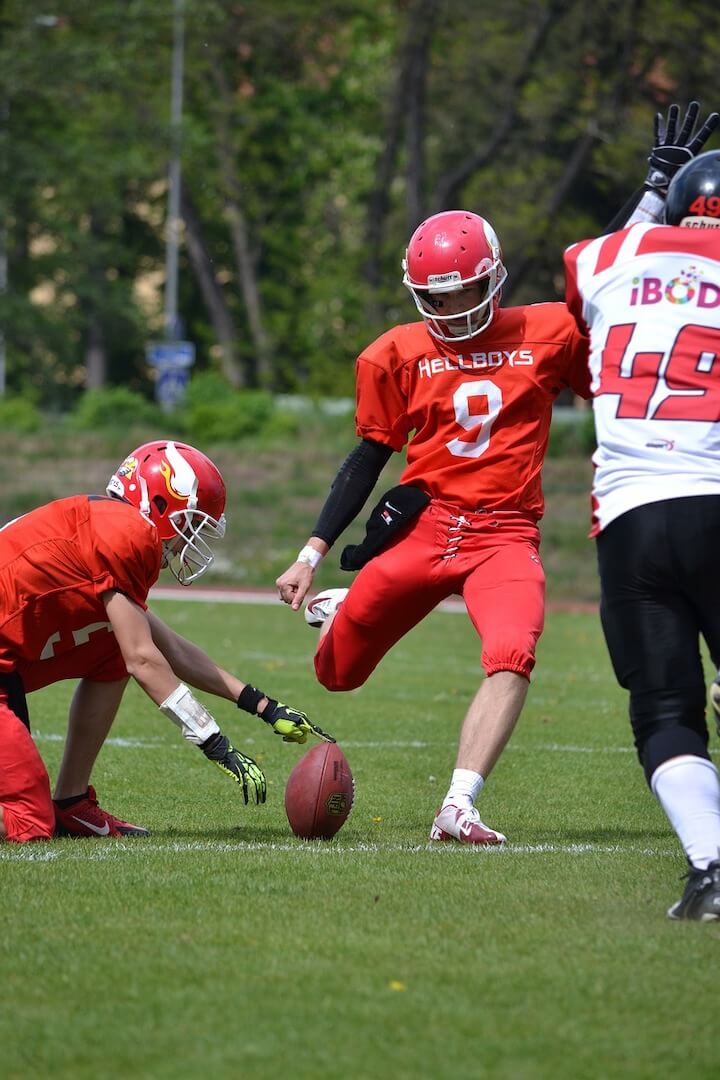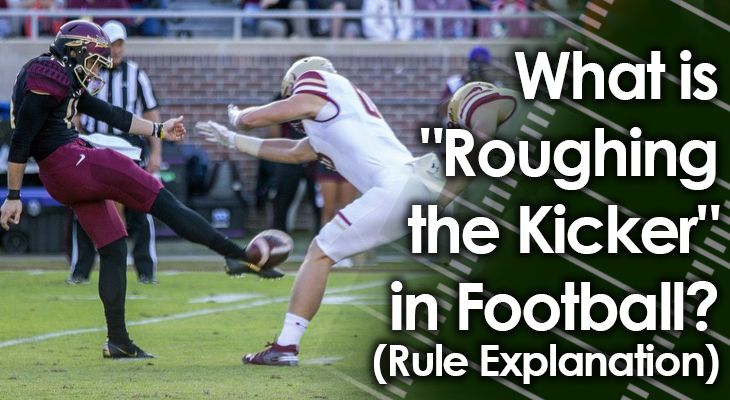Football leagues have rules that protect players who find themselves in vulnerable positions.
Whether this be receivers waiting for a pass, kick returners waiting for the ball, or punters in the act of kicking, there are different rules that are set to reduce the chances of injuries in the game.
"Roughing the Kicker" is one of those rules meant to protect both place kickers and punters while in the act of kicking.
When they're in this position, their bodies are very vulnerable. In many cases, they're on just one leg -- as the other one is in the air kicking the ball -- which puts their ankles and knees in a very vulnerable position.
To deter defensive players from making contact in these situations, leagues implemented the Roughing the Kicker rule, which comes with harsh penalties.
The rule can be quite challenging to understand, so let's take an in-depth look at what the Roughing the Kicker penalty is.
Contact with a Kicker
In general, defensive players on special teams are not allowed to make any contact with a player who is kicking from behind the line of scrimmage.
That includes punters as well as place kickers who are attempting field goals or extra points.
There are a few exceptions to that rule, though...
Contact can occur with a player who is kicking if:
- It's incidental and happens after the defensive player has touched the ball first while it's in the air
- The kicker causes the contact with their natural motions
- It happens during a rugby kick or quick kick
- It happens when the kicker runs with the ball
- It happens when the kicker picks up or falls on a fumble
- It happens only because a defender is blocked or pushed into the kicker by a player on the kicker's team
- It happens because a player on the kicker's team commits another penalty
In all other instances, contact with a kicker behind the line of scrimmage is not allowed.
While this might seem like a long list of exceptions, it's really not. Most of these exceptions don't happen often.
In other words, it's in the best interest of coaches to teach their players to avoid making contact with a kicker in just about all circumstances.

When is a "Roughing the Kicker" Penalty Called?
If a defender makes contact with the kicker and the contact doesn't meet one of the above exceptions, then the referee calls a penalty.
But, there are actually two kinds penalties that may be called when this illegal contact occurs.
#1. Roughing the Kicker - The more serious of the two penalties.
#2. Running into the Kicker - Which we'll describe later...
Roughing the Kicker occurs if a defender makes contact with the kicker's plant leg while the player's kicking leg is in the air.
This can be an extremely dangerous situation for the kicker, because his plant leg in this situation is extended straight out and is sunk hard into the ground.
As a result, contact with the plant leg at this point could easily result in broken bones and/or severely damaged muscles and ligaments.
A Roughing the Kicker penalty is also called if a defender slides into the kicker or contacts the kicker when both of their feet are on the ground.
The one exception to this is if the contact isn't too severe or if the kicker puts both of his feet back on the ground before the contact, and then just falls over the defender onto the ground.
When is a "Running into the Kicker" Penalty Called?
Running into the Kicker is the less severe penalty among the two.
Referees call this foul whenever a defender makes contact with the foot of the kicking player, even if the kicker is in the air when the contact happens.
This penalty is also called if a defender slides underneath the kicker.
Doing so prevents the kicker from safely putting both feet back onto the ground after the kick.
The Penalty Yardage
Since the Roughing the Kicker foul is more severe, the same goes for the resulting penalty. When this foul is called, the result is the same as other personal foul penalties.
The referee awards the kicking team 15 yards from wherever the previous line of scrimmage was (not where the foul occurred in the backfield).
The kicking team will also receive a first down automatically.
For instance, instead of the defending team getting the ball back with a punt on fourth down, the kicking team will have its offense return to the field with a new set of downs.
In instances of this penalty on a field goal attempt, it could allow the offense to try to score a touchdown, rather than just get 3 points from a field goal.
The penalty for a Running into the Kicker foul isn't nearly as bad...
The defensive team receives a 5-yard penalty from the previous line of scrimmage, and since it is not a personal foul call, it doesn't give the kicking team an automatic first down.
If the 5 yards gives the kicking team a first down, they will get it. If not, it will remain the same down as it was when the foul occurred.
One thing to note is that referees are always told to default to the more serious "Roughing the Kicker" penalty if there is any doubt in their mind as to which penalty to call.
In other words, they will always call the personal foul penalty unless it's obvious that it's a less serious penalty.

